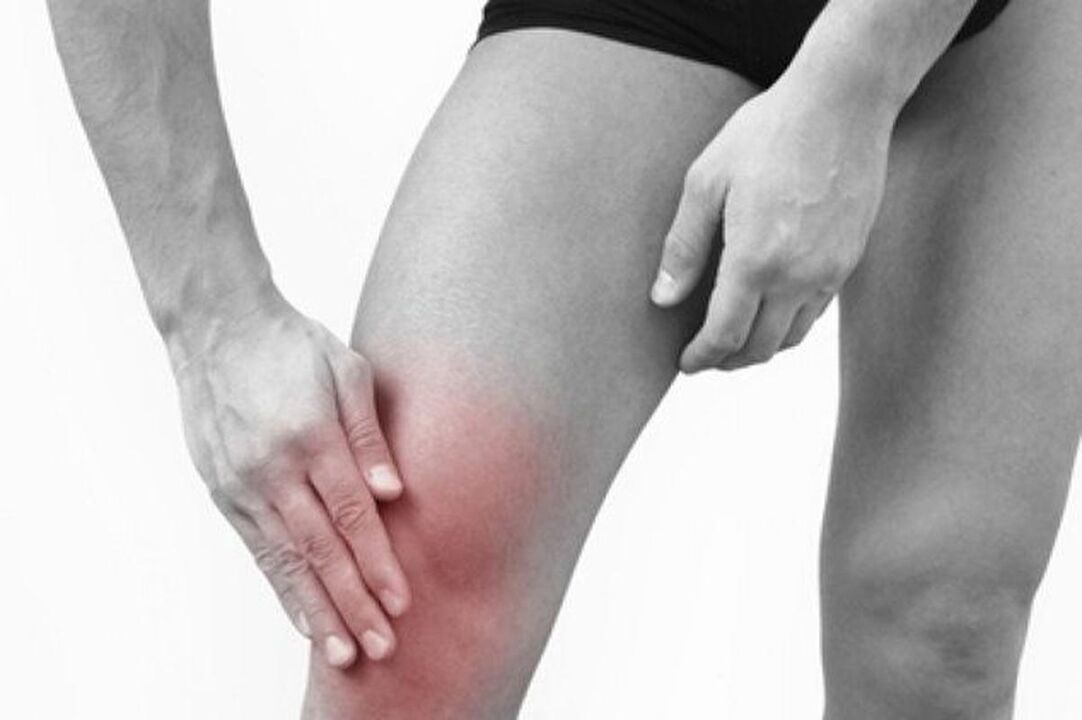
Gonarthrosis is a pathological process in the cartilage tissue of the knee joint, which causes its deformation. This process is associated with high stress on the knees, wear and salt deposits.
Myths about gonarthrosis
There are 3 most famous myths:
- "The diagnosis of gonarthrosis is the prerogative of people with increased physical activity, and people with predominantly sedentary jobs do not experience this. " In fact, excessive physical activity actually contributes to cartilage deterioration. During idle work, a static effect occurs on the knees, the blood supply is disrupted. In addition, a sedentary lifestyle leads to weight gain.
- "Gonarthrosis of the knee joint is incurable, the disease progresses daily. " This disease is indeed chronic, but with adequate timely treatment it is possible to prevent cartilage deterioration.
- "In osteoarthritis, you need to move as little as possible and burn more. " A patient with such pathology is assigned a special exercise that strengthens the ligament apparatus. Only a few sports are really contraindicated.
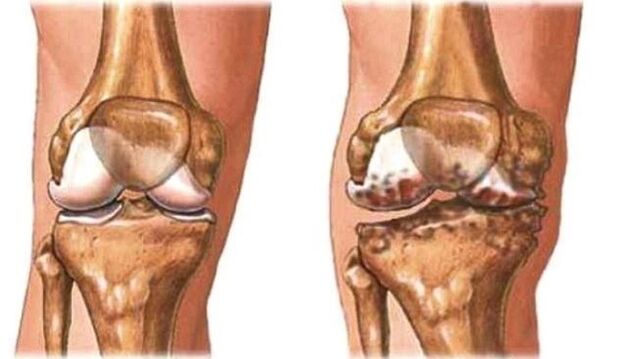
Gonarthrosis is the destruction of the articular cartilage in the knee joint and on the surface of the surrounding bone.
Manifestations of osteoarthritis of the knee joint
Manifestations depend on the severity of the deformation. The more pronounced it is, the more pronounced the symptoms.
Symptoms of gonarthrosis:
- Long asymptomatic period;
- Discomfort in the knee area;
- Pain syndrome;
- Reduced mobility;
- Morning hardness up to half an hour;
- The presence of a crisis during active movement;
- Change of gait.
Bilateral gonarthrosis occurs when the knee joints of both limbs are involved in the process. This is one of the most severe forms. Found in the elderly.
Right gonarthrosis occurs with excessive static or dynamic physical exertion on the right limb. More often in athletes.
Left-sided gonarthrosis occurs in overweight people and athletes who have a load on the left leg.
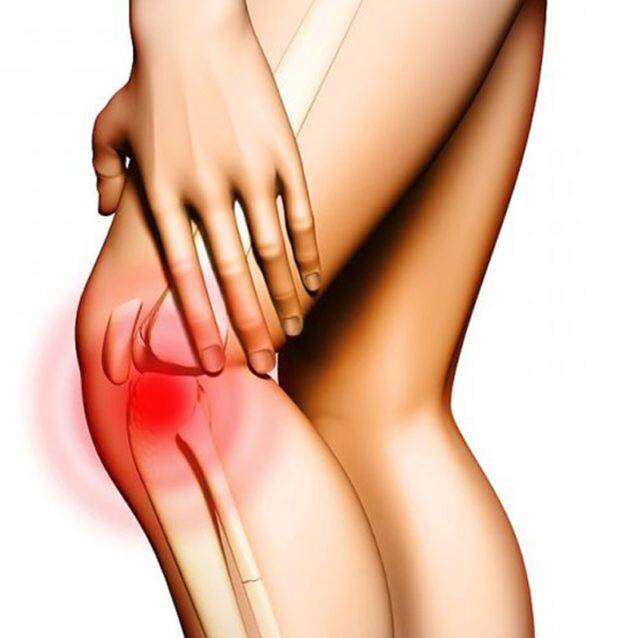
Causes of gonarthrosis development
Gonarthrosis is primary and secondary. Primary can occur in childhood and adolescence, which is associated with joint deformity, as well as due to the natural aging process in the elderly.
Used due to injury or existing diseases. Main reasons:
- Fractures, bruises, dislocations;
- Excess weight;
- Presence of inflammatory process in the joint and lack of adequate therapy;
- Metabolic diseases accompanied by the deposition of salts in cartilage tissues;
- Operations;
- Vitamin D deficiency;
- Hormonal disorders;
- Weight gain;
- Some sports (jogging, hockey, football).
Who is at risk?
The risk group includes:
- Professional athletes;
- Obese people;
- Patients who have undergone trauma or surgery;
- People over the age of 45;
- Patients with varicose veins;
- Who had cases of osteoarthritis in the family.
The risk group also includes women who wear shoes with high heels or flat thin soles.
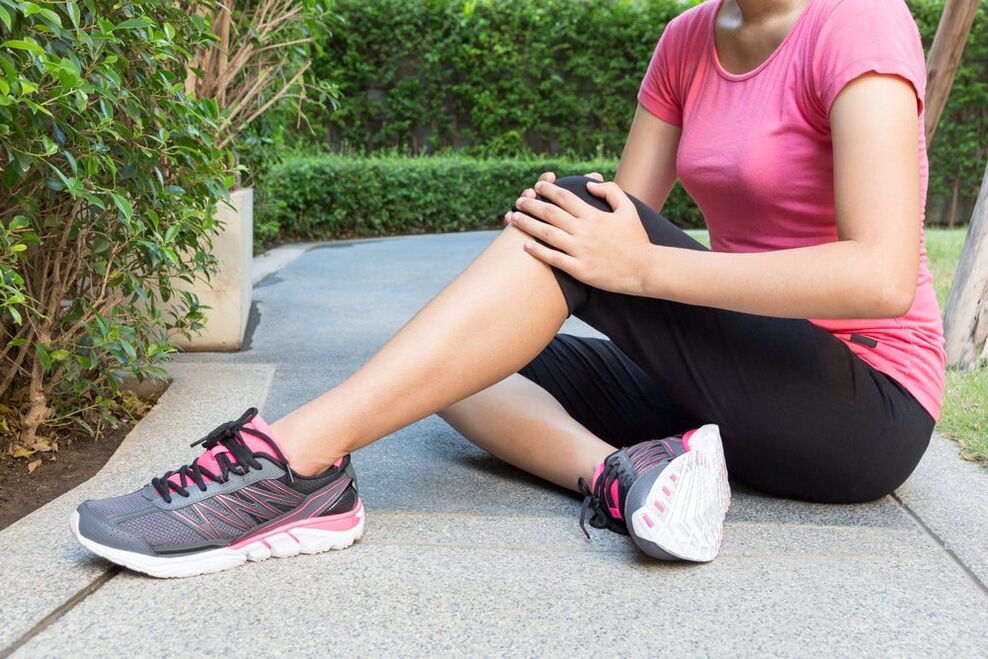
The exact causes of knee osteoarthritis are unknown.
Degree of gonarthrosis
Radiographically, this pathology is divided into 5 stages or degrees:
- Stage 0 - Absence of arthrosis X-ray;
- Stage 1 - appearance of a small osteophyte;
- Stage 2 - The osteophyte has clear contours, the joint space is minimally altered;
- Stage 3 - Narrowing of the joint space;
- Stage 4 - gap pronounced narrowing, subchondral bone sclerosis.
Knee gonarthrosis 1 degree
The first degree is characterized by fatigue, limited mobility is slightly pronounced and crackling is heard. The pain occurs after waking up, sitting for a long time and exercising.
There is no deformation at this point. Radiography shows narrowing of the joint space.
How to treat gonarthrosis?
A special group of drugs is used for treatment - chondroprotectors. They contain chondroitin and glucosamine, which restore cartilage structure and increase elasticity. Nonsteroidal anti-inflammatory drugs are used to relieve pain.
Primary gonarthrosis is most often bilateral. Even in the case of the development of a unilateral form of the disease, after a certain period of time the other limb is also involved in the pathological process.
Early symptoms of osteoarthritis of the knee joints are mild and are not typical
Treatment methods
In addition to drug treatment in the remission phase, the following methods are used:
- Physiotherapy;
- Massages;
- Flea therapy;
- Ultrasonic exposure;
- Radon and hydrogen sulfide baths;
- Phonophoresis, electrophoresis;
- Paraffin wrap;
- Use of healing mud.
These methods are used during remission regardless of the stage of disease development.
Is mud good for knee gonarthrosis? One of the indications for mud therapy is diseases of the musculoskeletal system. The therapy course is held twice a year. It involves 10 to 15 procedures. The method can be used at home, while dirt can be purchased at a pharmacy.
In the first degree, the patient is prescribed orthopedic shoes for the period of exacerbation to prevent the development of the deformity process. Women are advised to wear shoes with a dense sole at least 1 cm, heel 5 cm to normalize the diet - reduce the amount of salt, spicy foods. Jellies Jellies and jellies are included in the diet because they are natural chondroprotectors.
Another method is weight correction. Reducing body weight to an optimal level for a given patient will reduce the strain on the musculoskeletal system.
Grade 2 gonarthrosis
In the second degree, the pain intensifies, making movement significantly restricted. Walking long distances causes severe pain syndrome. The patient needs rest to continue.
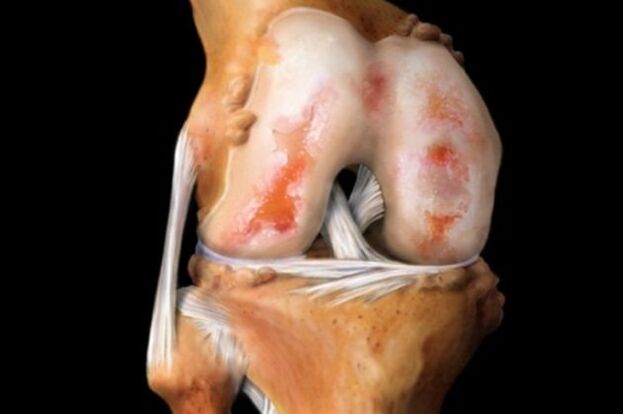
If treatment is not started (or is ineffective), osteoarthritis of the knee joint progresses even further.
Crunching becomes loud, lameness appears. The affected joint is deformed. The inflammatory process takes place in the inner membrane of the joint.
On plain radiology, narrowing of the joint space, the appearance of the spine on the bone (osteophytes) are found.
Treatment
Drug therapy is based on the use of nonsteroidal anti-inflammatory drugs. They have analgesic and anti-inflammatory effects. In addition, chondroprotectors are prescribed.
After the exacerbation is completed, physiotherapeutic exercises, massage are prescribed.
Diet recommendations:
- Increase the number of vegetables;
- Include jelly and jelly jelly in the diet;
- Eat lean fish twice a week;
- Give preference to lean meat;
- Eat bran bread.
It is also recommended to include bananas, nuts, eggs, spinach, legumes, liver, cabbage in the diet.
In addition to orthopedic shoes, special knee pads are prescribed.
Arthroscopic removal of deformed tissue from surgical interventions is used. This method has a short-term effect of 2-3 years.
Knee gonarthrosis, symptoms and treatment of 3 degrees
The most severe degree. Pain syndrome occurs during movement and at rest. Knee mobility is as limited as possible and sometimes impossible. Deformation is pronounced. There is virtually no joint space on the radiograph.
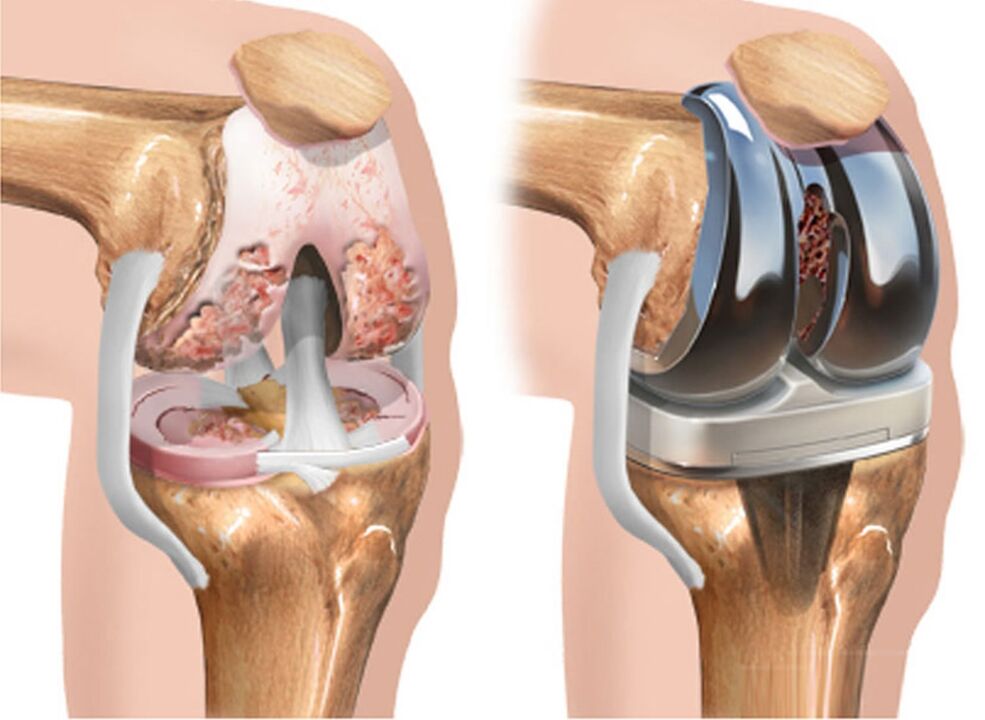
Progressive destruction of cartilage and bones in the later stages leads to the development of an ugly deformity of the knee, which increases in size.
Treatment
At this stage, in addition to nonsteroidal anti-inflammatory drugs, the patient is prescribed hormonal drugs. They are injected intravenously or inside a joint. Acute pain syndrome is relieved with painkillers.
Stage 3 surgery has already been shown - endoprosthesis. Changing individual elements of the bone or the entire joint. Contraindications: Osteoporosis.
Complications of arthroplasty:
- Marginal necrosis of the skin;
- Denial of prosthesis;
- Neurovascular disorders (paresis, thrombosis).
In addition to endoprosthesis, there is arthrodesis surgery - the removal of deformed tissue and joints. Rarely used.
Osteotomy - excision of the edges of the bones to distribute the load.
Physiotherapy
Exercises for gonarthrosis of the knee joint relieves pain, strengthens the musculoskeletal system and stimulates blood flow in them.
- Exercise # 1. The patient lies on his back, raises his leg and holds it for at least 30 seconds, then another. Performance time should be up to 2 minutes.
- Exercise number 2 "Bicycle". Lying on your back Imitate a walking bike. Repeat 20 to 50 times.
- Exercise number 3. The patient lies on his stomach, alternately bends his legs, trying to reach the buttocks with his heel. Repeat 20-50 times.
- Exercise number 4. It is done the same as the previous one, only statistically. That is, the patient fixates the limb in this position for 20-30 seconds.
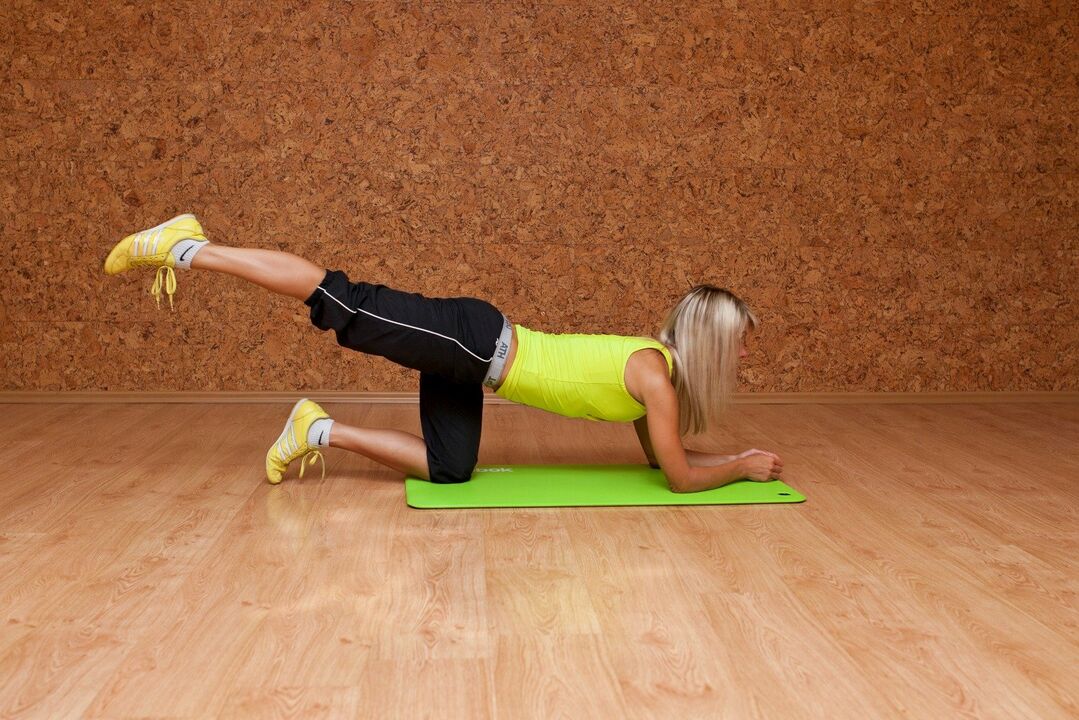
Patients are advised to stretch:
- Exercise # 1. While standing, lean forward, try to reach the floor without bending your knees. Hold for 20 seconds, inhale air through nose, exhale through mouth.
- Exercise number 2. Sit on the floor with straight legs, try to put your hands on your feet and keep your knees straight. Hold this position for 30 seconds. Perform 2-3 approaches. If the flexibility is not enough to reach the legs, they take the foot off the lower leg and try to bring the body as close to the feet as possible.
- Exercise number 3. The same position as in the previous performance. The patient gets to his feet, tries to straighten, and holds himself as high as possible on the floor. If the exercise is difficult to do, then the leg is taken in the lower leg. Hold the position for 10-30 seconds, then do the other leg.
Contraindications are the period of exacerbations and the presence of an acute inflammatory process. Patients are prohibited from jogging, long walks and kneeling.
After performing physiotherapy exercises, it is useful to massage the muscles of the thigh, lower leg on the affected limb. The joint itself should not be affected, it will increase inflammation.
Disease prevention
This disease is not hereditary, so its development can be avoided. This requires:
- Avoid injury during sports;
- Do stretching and joint gymnastics, yoga;
- Eat right;
- Maintain a normal body weight;
- If you experience any discomfort in the knee area, consult your doctor;
- Drink enough water;
- After 40 years, take chondroprotectors prophylactically;
- Do not freeze funds;
- In the presence of early stages of the process and during remission, do not increase physical activity, do not miss;
- Wear orthopedic shoes;
- Use knee pads during sports.
















































